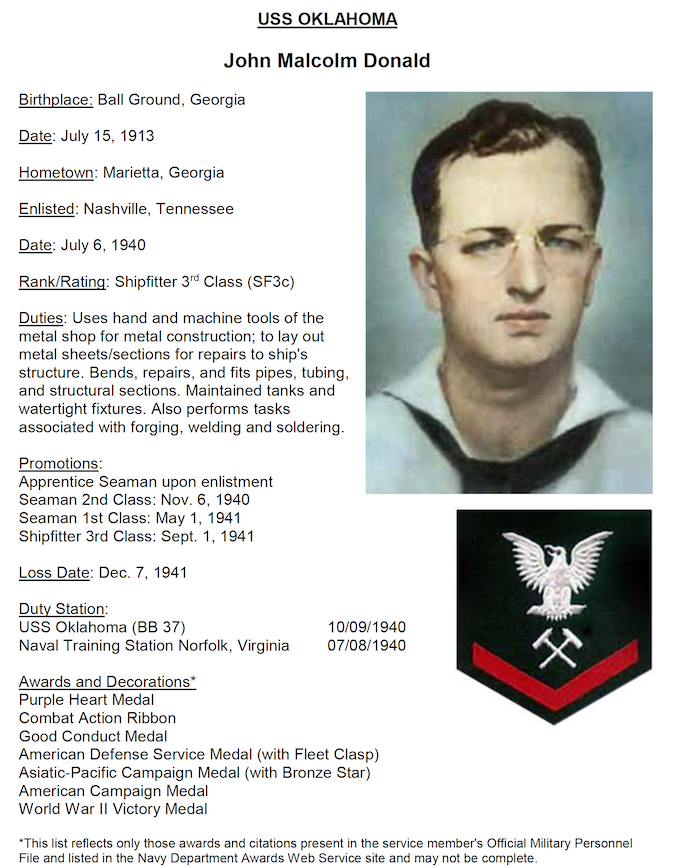How many Sailors have been identified from the USS Oklahoma disinterment?
Prior to the 2015 disinterment, which marked the beginning of Project Oklahoma, 388 service members were unaccounted for. Since then, 355 have been individually identified.
Who makes identifications, and how?
Scientists at Defense POW/MIA Accounting Agency (DPAA) labs in Joint Base Pearl Harbor- Hickam, Hawaii, and Offutt Air Force Base, Omaha, Nebraska, identify past-conflict Sailors. Remains are identified using DNA reference samples from USS Oklahoma families; DoD now has more than 361 of required samples to support DNA analysis on Oklahoma remains as well as many medical and dental records from the Oklahoma service members.
What is the basic identification process?
The DNA profiling process begins with a sample of an individual’s DNA, typically called a “reference sample.” During Project Oklahoma, The Navy reached out to families via letters and phone calls requesting their participation in the Family Reference Sample Program in efforts to possibly make a positive match, and identify their loved one lost on the USS Oklahoma.
What is the Navy’s policy concerning family notification?
It is the policy of the Navy to notify the primary next of kin whenever there is a decision that impacts the remains of their family members.
What is the Navy’s notification process?
Once DPAA identifies a Sailor, the Navy Casualty Office makes the official notification to the Person Authorized to Direct Disposition (PADD). Following the notification a Navy Casualty case worker is assigned to the family to coordinate a formal briefing to discuss the identification, their wishes for disposition options. A Casualty Assistance Calls Officer (CACO) and Navy Casualty case worker conduct a Family visit/briefing with the family via various methods (Virtual, telephonically or in-person) and explain all entitlements, processes and assist with the final disposition of the remains.
Read the full article here





